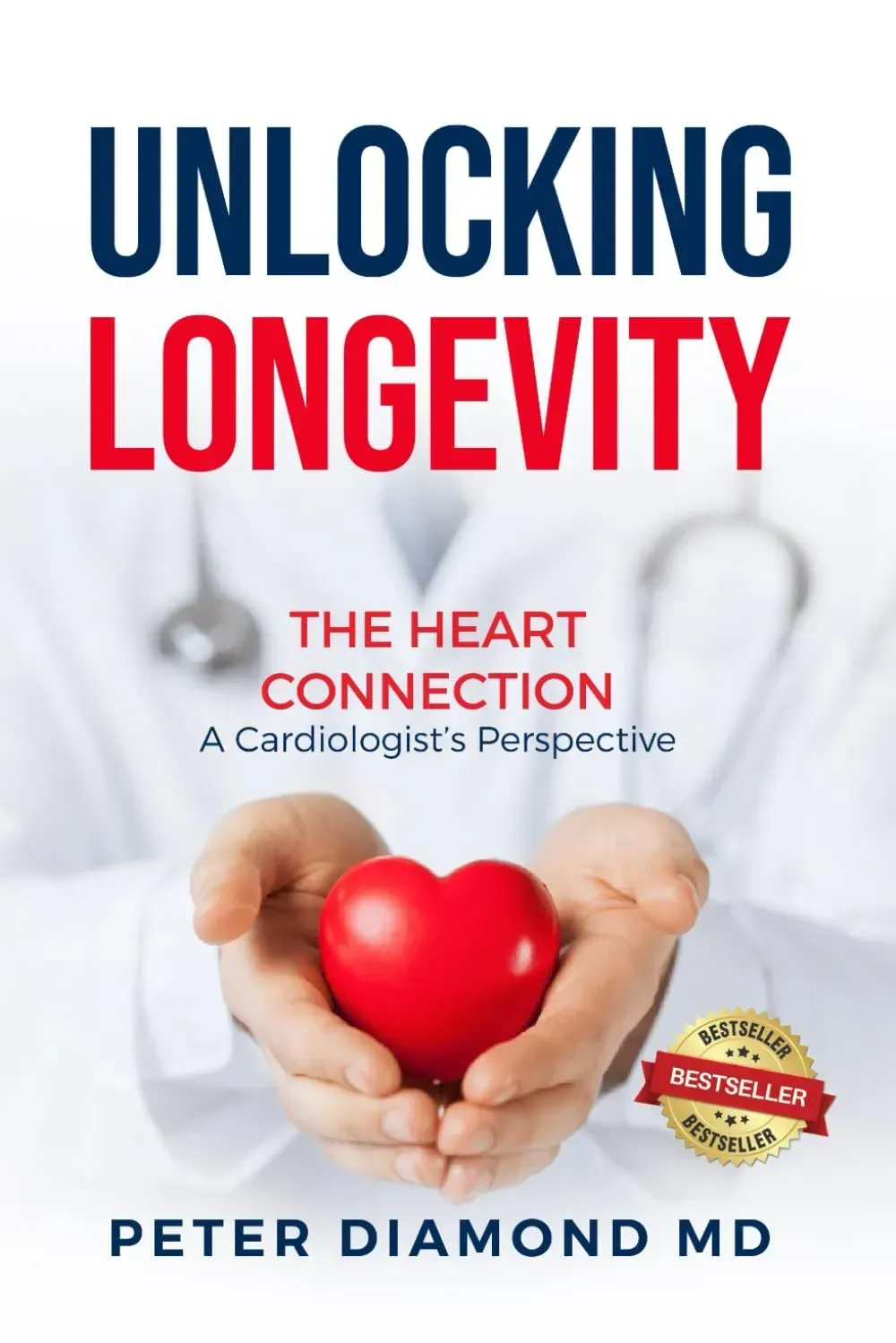

GET DR. PETER DIAMOND’S INCREDIBLE BOOK
Unlocking Longevity:
The Heart Connection: A Cardiologist’s Perspective
This unputdownable book teaches you how to:
Craft the perfect diet: Learn how food fuels your heart for optimal health
Unleash the power of sleep: Discover its vital role in a healthy heart
Explore the potential of supplements: Zero in on what you need and why PLUS - Learn how spirituality can change the game in lifelong health
All in simple, clear language and a style readers love.
Pick Up Your Free PDF Copy Of
Unlocking Longevity Today!
DIAMOND HEART CARE BLOG

Cold Immersion vs Sauna Therapy: Which Is Better For Your Health?
Uncover the benefits and risks of cold water immersion and sauna therapy. Learn how cold therapy may improve mood and muscle soreness, while sauna sessions are scientifically proven to enhance heart h... ...more
Longevity ,Wellness
March 01, 2025•4 min read

The Battle Against Hypertension: It’s More Than Just Popping Pills
Learn effective ways to manage hypertension beyond medications. This article explores how age, weight, and lifestyle impact blood pressure, offering practical solutions like weight loss, exercise, and... ...more
Heart Care ,Nutrition &Supplements
February 27, 2025•3 min read

The Importance of Spirituality in Goal Orientation
Explore the intersection of spirituality, purpose, and health in this thoughtful article that discusses how accepting life’s transience and embracing spiritual growth can guide us toward healthier liv... ...more
Spirituality
February 25, 2025•4 min read

Supplements for a Happy Heart
Uncover six heart-healthy supplements that may complement your cardiovascular care. From Fish Oil to Vitamin K2, this article breaks down the top supplements proven to support heart health. ...more
Heart Care ,Supplements
February 23, 2025•4 min read

Reevaluating Statins: Cardiovascular Protection and Cognitive Health
Explore the conventional role of statins in cardiovascular health and cognitive function. This article delves into the history of statins, their impact on heart disease, and the growing concerns about... ...more
Heart Care ,Neuro
February 22, 2025•4 min read

5 Essential Supplements for Optimal Health and Longevity
Discover the top five essential supplements—Magnesium, Vitamin D3, Vitamin K2, Fish Oil, and Creatine—that can support overall health, enhance brain function, boost heart health, and improve muscle st... ...more
Longevity ,Nutrition &Supplements
February 08, 2024•5 min read
Empower yourself with holistic, lifelong health.
Click below and change your life for good
Empower yourself with holistic, lifelong health.
Click below and change your life for good
More than 200,000 people agree
that we are different
“Lorem ipsum dolor sit amet consectetuer adipiscing elit. Aenean commodo ligula eget dolor.“
GYMNASTICS COACH
Sarah North
Testimonial

John Doe
Finance Manager
Lorem ipsum dolor sit amet, consectetuer adipiscing elit. Aenean commodo ligula eget dolor. Aenean massa. Cum sociis natoque penatibus et magnis dis parturient montes, nascetur ridiculus mus.

John Doe
Finance Manager
Lorem ipsum dolor sit amet, consectetuer adipiscing elit. Aenean commodo ligula eget dolor. Aenean massa. Cum sociis natoque penatibus et magnis dis parturient montes, nascetur ridiculus mus.

John Doe
Finance Manager
Lorem ipsum dolor sit amet, consectetuer adipiscing elit. Aenean commodo ligula eget dolor. Aenean massa. Cum sociis natoque penatibus et magnis dis parturient montes, nascetur ridiculus mus.


